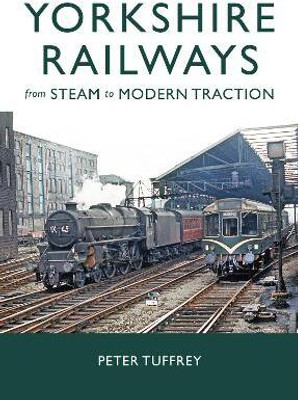Yorkshire Railways from Steam to Modern Traction(English, Hardcover, Tuffrey Peter)
Quick Overview
Product Price Comparison
Thirteen years elapsed between the publication of British Railways' Modernisation Plan and the end of steam services on the national network. In this transitional period, modern traction worked alongside steam engines and was captured by enthusiasts across the country.Yorkshire offers an interesting insight into the changeover during the mid-to late 1950s and much of the 1960s, as the two forms of traction worked side-by-side on the main lines and branches with both passenger and freight trains. The county was also affected by several other features of the plan, such as line closures, station rebuilds and infrastructure improvements.Yorkshire Railways from Steam to Modern Traction uses over 200 colour and black-and-white images to present this changing scene in the 1950s and 1960s.Many of the familiar steam locomotive classes are featured: Fowler Royal Scot; Stanier Jubilee; Stanier Class 5; Thompson B1; WD Austerity; etc. New diesel classes working in Yorkshire were: Brush Type 2 (TOPS Class 30), English Electric Type 3 (Class 37), English Electric Type 4 (Class 40), Sulzer Type 4 (Class 45) and Brush Type 4 (Class 47). The Sheffield to Manchester Woodhead route was electrified in the 1950s and the EM1 and EM2 Classes handled freight and passenger services respectively.The locomotives are seen at locations across Yorkshire: Alne; Ardsley; Arthington; Barnsley; Batley; Beverley; Bradford; Bridlington; Doncaster; Halifax; Harrogate; Hellifield; Holbeck; Huddersfield; Hull; Leeds; Mirfield; Normanton; Penistone; Rotherham; Scarborough; Selby; Sheffield; Wakefield; Whitby; York.The pictures have been taken from the lineside, at stations, sheds and marshalling yards.


